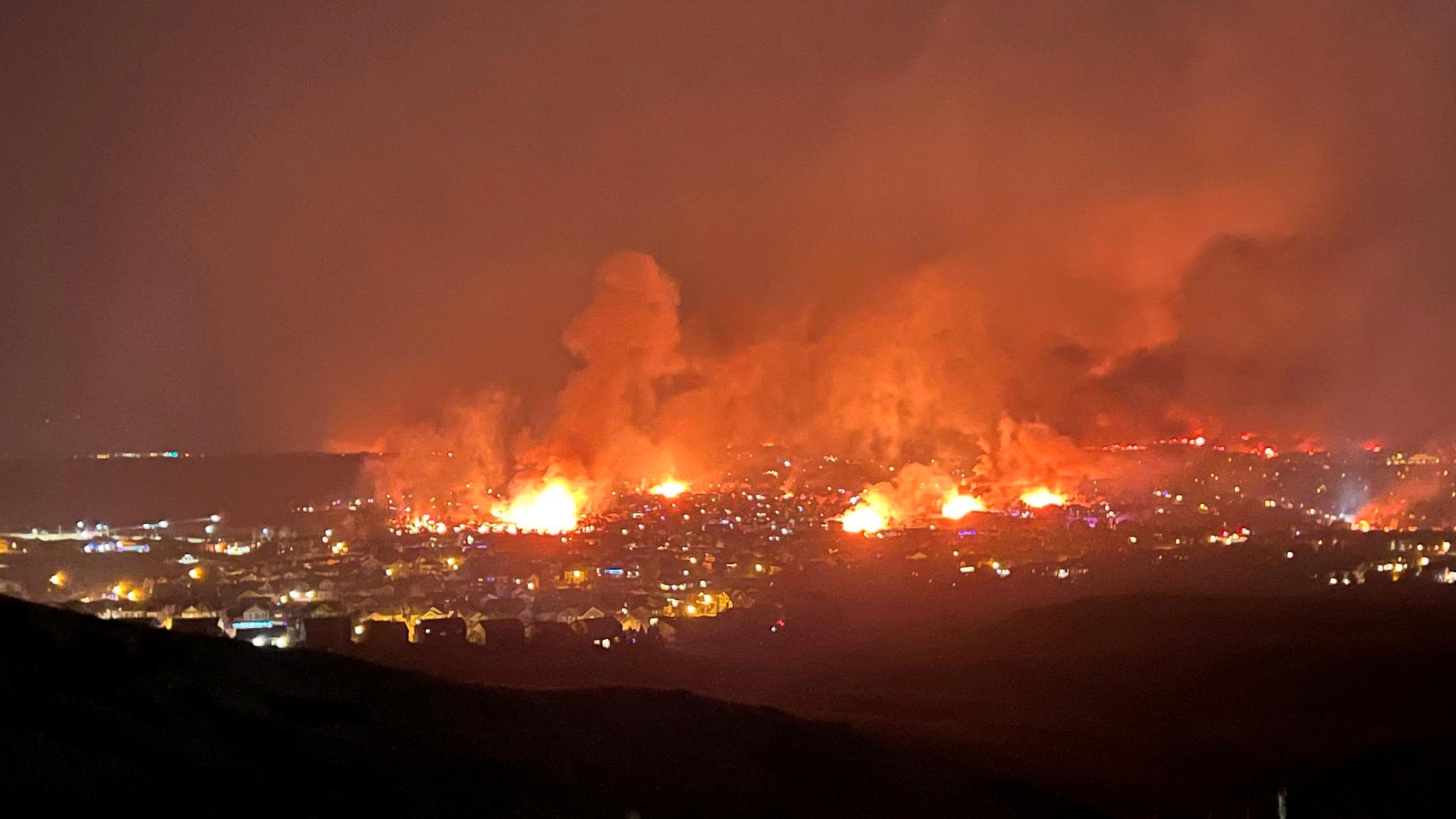Hundreds of homes have been taken by the flames of grass fires raging near Denver in the US state of Colorado. More than 30,000 people have been evacuated.
—
At least 500 homes, in addition to a mall and a hotel, have been confirmed destroyed in the flames. Six people have so far been sent to hospital, reports Denver Post.
Some of the fires in the area were triggered by power lines that fell under strong winds and ignited powerful grass fires. These have spread over an area of at least six square kilometers.
The wind moves at up to 177 kilometers per hour. The strong wind provided a lot of nutrients in the form of oxygen to the fires and propelled them forward with tremendous speed.
“The emergency services can only run in front of this fire and try to get people out of the way,” said Sheriff Pelle, according to the news agency Reuters.
There is no sign that the fire will go away immediately.
– The end will not come until the wind lies, says Pelle.
A video taken by the local police shows one of the neighborhoods in flames:
Entire neighborhoods demolished
The fire started late in the afternoon local time, early night until New Year’s Eve Norwegian time. Colorado is eight hours behind Norway.
21,000 residents of the city of Louisville were ordered evacuated. The same applies to 13,000 inhabitants in the neighboring town of Superior.
The two cities are located about 20 miles northwest of Denver, and the fires are clearly visible from the state capital.
Satellite images from Maxar Technologies show how fires have devastated entire neighborhoods in Superior, a suburb just northwest of Denver.
More fires give increased emissions give more fires …
The flames get good help from a record dry half year in Denver and the surrounding area, with unusually little snow.
The inferno in Colorado rounds off a year in which grass and forest fires have led to record-breaking emissions of greenhouse gases. Major fires in the United States, Siberia and Turkey, among others, led to emissions of 1.76 billion tonnes of CO2, according to the EU’s climate monitoring service Copernicus. That is twice as much as Germany’s annual emissions.
Emissions that contribute to a drier and warmer climate, which in turn creates the conditions for more fires.
– We have seen large regions experience intense and prolonged forest fire activity. Dryer and warmer regional conditions in a changing climate have increased the flammability and fire risk in vegetation, Copernicus researcher Mark Parrington told The Guardian in early December.
–


